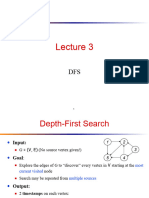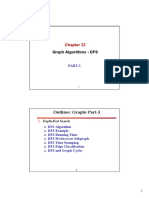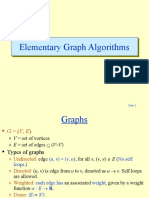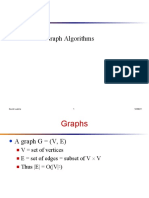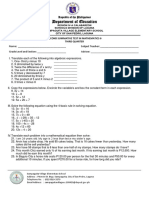0% found this document useful (0 votes)
124 views56 pagesGraph-2 Dfs
The document discusses depth-first search (DFS) and breadth-first search (BFS) graph algorithms. It provides pseudocode for DFS that uses data structures like color, time, prev, d, and f arrays to track the state of vertices as the search progresses from one to the next. The code explores edges deeper first whenever possible before backtracking. An example run on a sample graph is shown with timestamps to illustrate the process.
Uploaded by
Nuzhat AfrinCopyright
© © All Rights Reserved
We take content rights seriously. If you suspect this is your content, claim it here.
Available Formats
Download as PDF, TXT or read online on Scribd
0% found this document useful (0 votes)
124 views56 pagesGraph-2 Dfs
The document discusses depth-first search (DFS) and breadth-first search (BFS) graph algorithms. It provides pseudocode for DFS that uses data structures like color, time, prev, d, and f arrays to track the state of vertices as the search progresses from one to the next. The code explores edges deeper first whenever possible before backtracking. An example run on a sample graph is shown with timestamps to illustrate the process.
Uploaded by
Nuzhat AfrinCopyright
© © All Rights Reserved
We take content rights seriously. If you suspect this is your content, claim it here.
Available Formats
Download as PDF, TXT or read online on Scribd
/ 56


